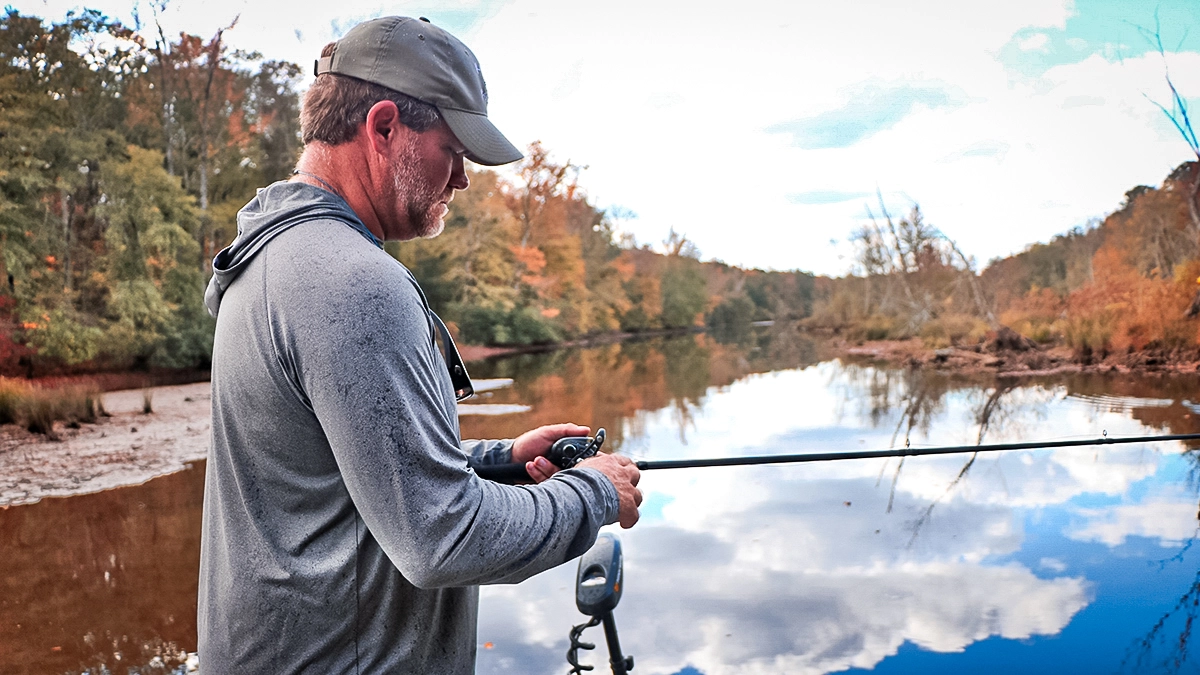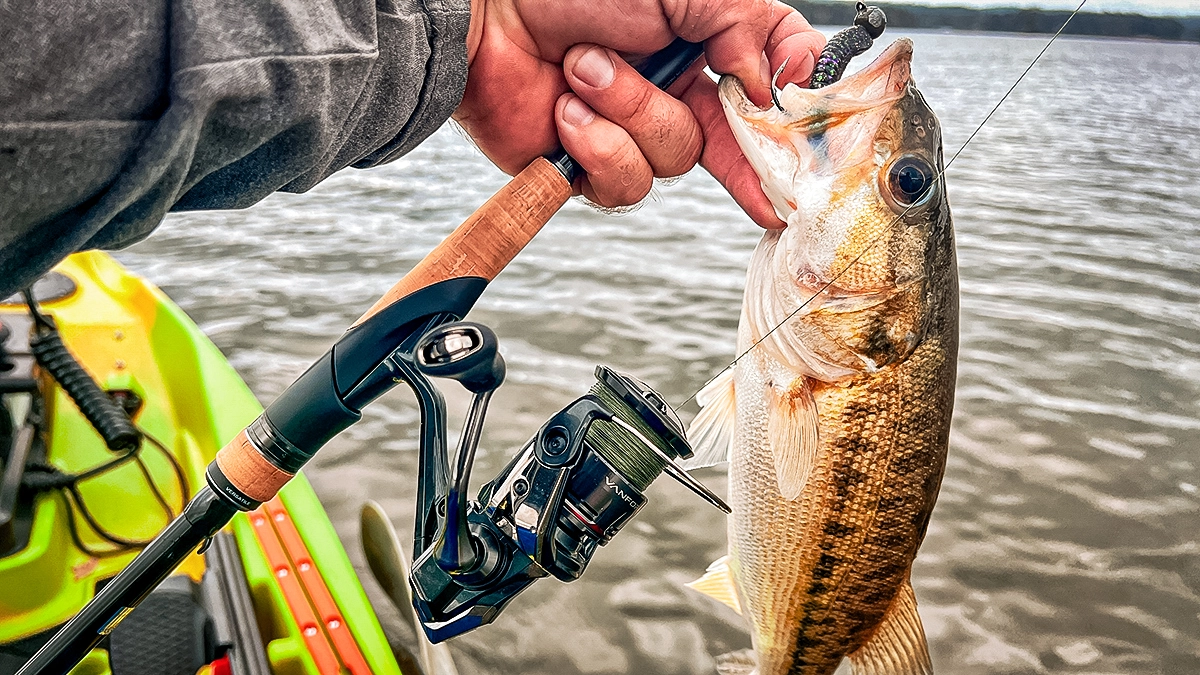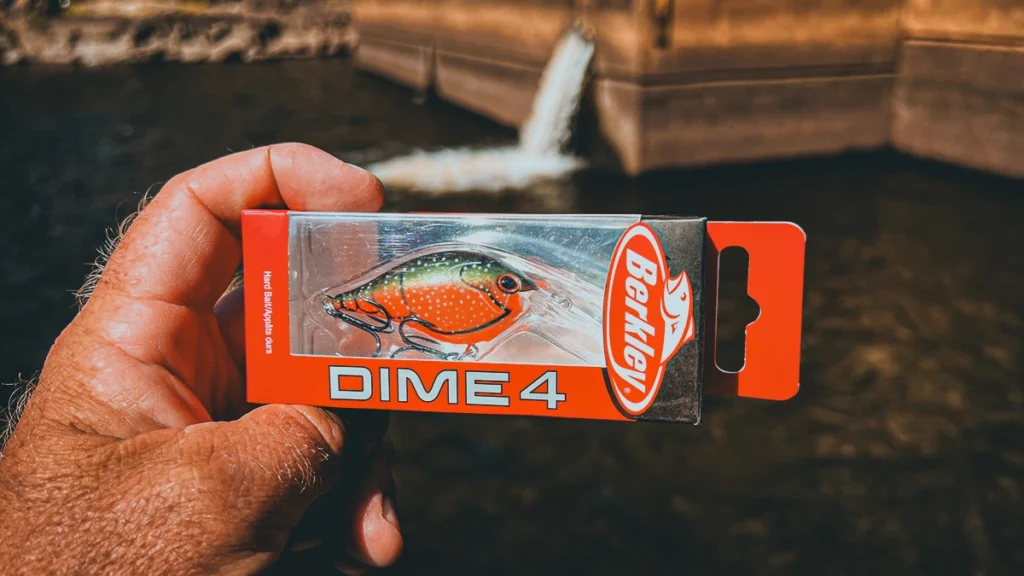The fall can be a great time of year to target bass, but it does come with its challenges. One of the pros: There are typically fewer boats on the water this time of year with outdoorsmen otherwise consumed by hunting and football. But there’s also one big con that justifies some anglers losing their interest: the fall turnover.
As the nightly lows begin to drop, the water temps follow suit; at least the surface water temps do. And as these surface temps get colder and colder, that section of the water gets denser and heavier. Inevitably, this water on the surface gets heavier than the water beneath it, and the water column flips, or in other words, it “turns over.”
This fall turnover stirs up sediment from the bottom and can wreck oxygen levels, throwing the bass into a funk for sure. But there are ways to beat the fall turnover.
How To Spot Fall Turnover

The game here is to catch fish during the fall by primarily avoiding areas affected by the turnover to the best of your ability. It is possible to catch fish in areas that have been ravaged by the upheaval of the entire water column, but there’s no real trick to doing that — not that I’ve found anyway. Instead, I’ve just found that sticking it out in those areas turns into me beating my head against a wall for a few bites.
It’s better to avoid the turnover and just fish elsewhere. To do this, however, you’ll need to know what to look for to identify whether or not there is a turnover happening in the area. For starters, keep an eye on the water temperatures. Most lakes don’t turnover until the surface temps get down below 50 degrees.
Once you start to see this, pay close attention to the water clarity; if there’s turnover, there will be a tannic dinginess to the water. Oftentimes it will be more coffee or tea colored than muddy or clear. And you’ll sometimes see dead leaves and other debris floating on the surface or mixed into the water column.
A sulphuric smell, like rotten eggs, often accompanies a turnover, too. Lastly, bait is big in the fall; if you don’t see any in the area, chances are the bass have bailed too.
There are a handful of ways to beat the fall turnover by avoiding it all together. The turnover comes and goes fairly quickly, lasting only a few days or sometimes a few weeks. And it doesn’t happen on every fishery in an area at the same time, or even everywhere on a particular fishery at the same time. So there are ways to fish around it.

Fish Ponds, Creeks, and Rivers
For starters, if there’s a turnover happening on the lake you wanted to fish but you’re not in a tournament or a situation in which you have to fish a particular fishery, you can simply choose to go somewhere else.
Shallow and smaller ponds typically turnover before larger lakes, so if you are just going fun fishing and pull up to a lake where an obvious turnover is happening, it may be better to regroup for the day and try to find a pond to pull up on.
Vice versa, if you are fishing a pond that’s turning over, chances are that the larger local lake hasn’t quite reached that point yet. Similarly, fishing creeks and rivers from the bank, kayaking down them, or even wading into them a bit is a great way to catch fish while you let the local lake turnover run its course. The current in these fisheries aerates the water and keeps the water temps mixed year-round, thus taking the effects of the turnover completely out of the picture.
You have to be smart and safe here though. The water temps and air temps are starting to plummet at this point and these fisheries can be remote — do all you can to be safe and avoid any situation in which you could get hypothermia or drown.
Wear appropriate clothing, fish in areas with good cell service, take dry clothes with you, take a waterproof fire starter, tell someone where you’ll be and when you’ll be done, fish with a buddy, and do anything else you can to ensure you are doing this as safely as possible, or don’t do it at all.

If You HAVE to Fish a Fall Turnover
Look For Current
Now, let’s say you are confined to one particular fishery. You have a tournament on Saturday for instance and you have to make the most of your day on the water, in spite of a turnover that’s happening. This is a great time to look for any area of the lake with current flowing into it.
Again, current aerates the water and stirs it up, and typically, if there’s a turnover happening, the water that’s coming in is fresher than the water that is already there. So fishing way up creeks and rivers and below dams and spillways are all great game plans for making the most of a bad situation.
You may also find a source of manmade current like a plant discharge. And even look to the backs of steep pockets after heavy rains where a fresh dose of runoff will pile up.
Stay Shallow
Going super shallow is another great way to avoid the turnover on a particular fishery. Remember, the turnover happens when the water higher in the water column mixes with the water below it. The surface temps are typically pretty even though for the first 2 or 3 feet. So, fishing shallower than that means that the water will have a minimal turnover there, if it turns over at all.
I understand that this is super shallow, but bass are notorious for staying in water as long as it will cover their backs — and that just requires a few inches of depth.
Fishing topwaters in areas like this works well up until the water gets into the lower 50s. And then you can still fish squarebills, lipless cranks, spinnerbaits, vibrating jigs, and glidebaits through these shallow areas as the temps break the 50-degree mark.

Go Deep
Going deep is another great way to avoid the turnover. This kind-of works for the same reason that staying shallow works. I’ve found that the turnover is the most detrimental between 4 and 15 feet, roughly, or at least that’s where it’s the worst to start with. The effects are less aggressive when you get shallower or deeper than that, so they take a little longer to affect the bite.
Looking for deep brush or rock and fishing jigs, Ned rigs, shaky heads, and drop shots in those areas is another great way to get bit if the water along the bank is looking a little funky. Crankbaits like the Dime 4 are also a good choice.
Look For Bait
If a lake is suffering from a fall turnover, looking for bait is another great way to find the most productive areas. Bait typically flees from areas that are being pounded by a turnover the same way bass do. But these schools of bait are easier to locate than individual bass, whether that’s with the naked eye along the surface or out off the bank using electronics. If you enter an area in the fall and can’t find any bait there, it’s generally a good idea to bail on that area pretty quickly.
If the turnover is happening in an area and there’s still bait there, you do want to invest a little time there to see if you can get bit. Bait is key in the fall. Its presence groups up bass and is the most essential factor in keeping them active even when a turnover is happening.
If you do find a semi-productive area like this though, you don’t want to count on the bait and bass being there day after day; you’ll often find that they are evacuating as fast as possible. But you can usually get back on the fish and baitfish that are fleeing the area by either making your way up shallower or out deeper.

Final Thoughts
There’s a lot of fear and confusion that surrounds the fall turnover. It’s a dreaded yearly event that no angler likes, but it is helpful to the overall health of the fishery in the long run. This necessary evil doesn’t have to derail your whole fall though. You can still catch fish if you focus on looking in the right places.
If you can, try avoiding fisheries with known turnovers happening and look to other local fishers for the time being. Current can be the key in a situation where you have to fish a particular lake, since it aerates the water and evens out the temperatures continuously.
Looking shallow and/or deep is another great way to avoid the worst effects of the turnover. And looking for bait is the best way to actually fish an area with a turnover and still beat it.
READ NEXT: What Lures We’re Throwing in November












